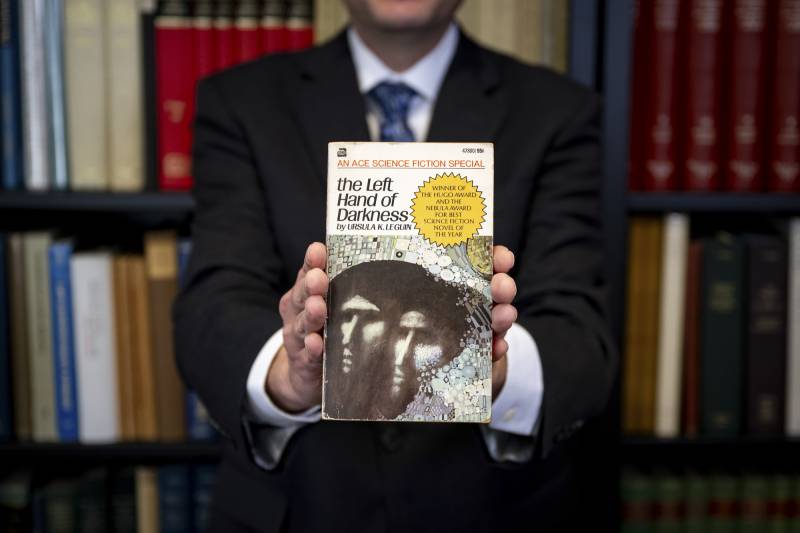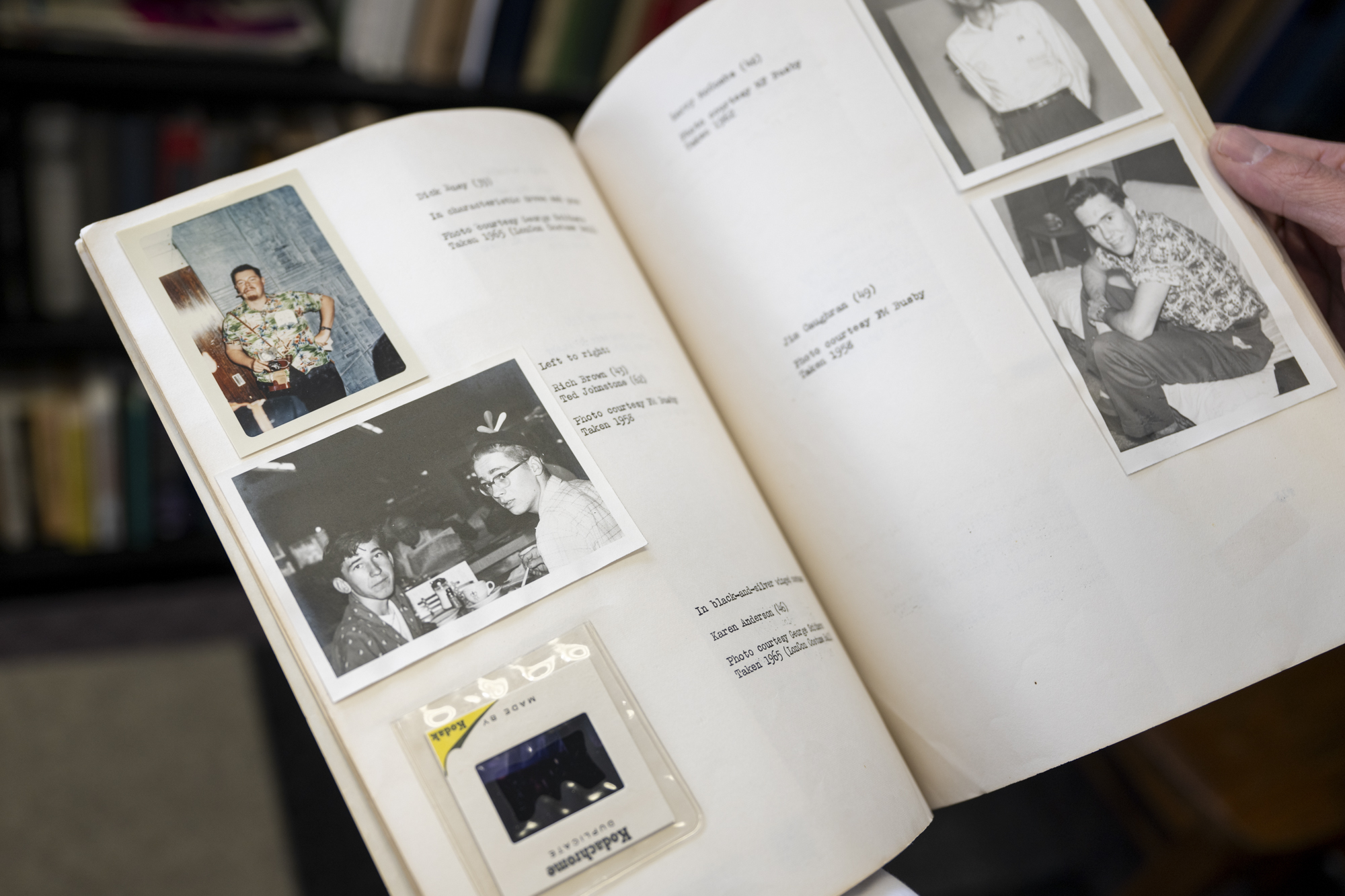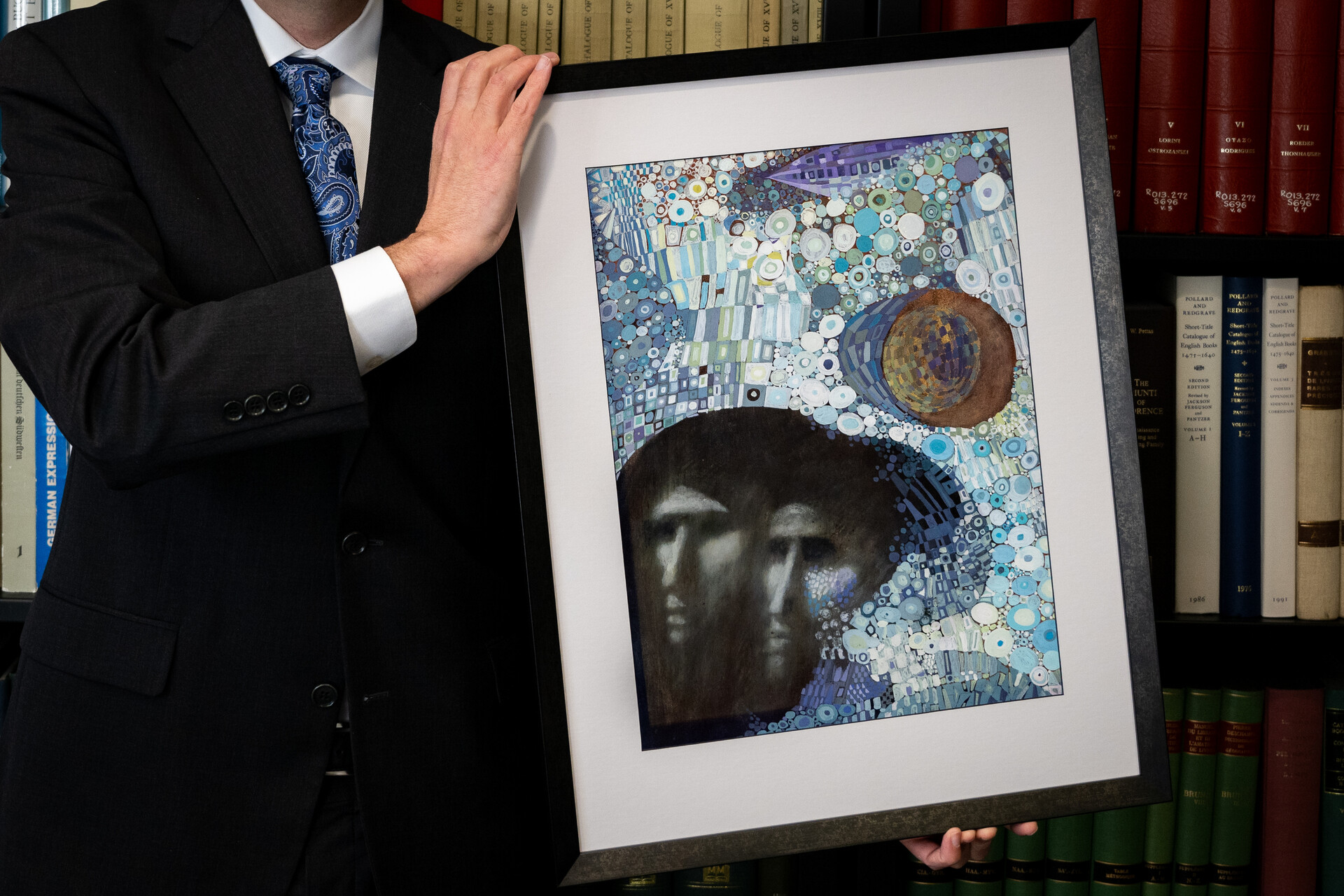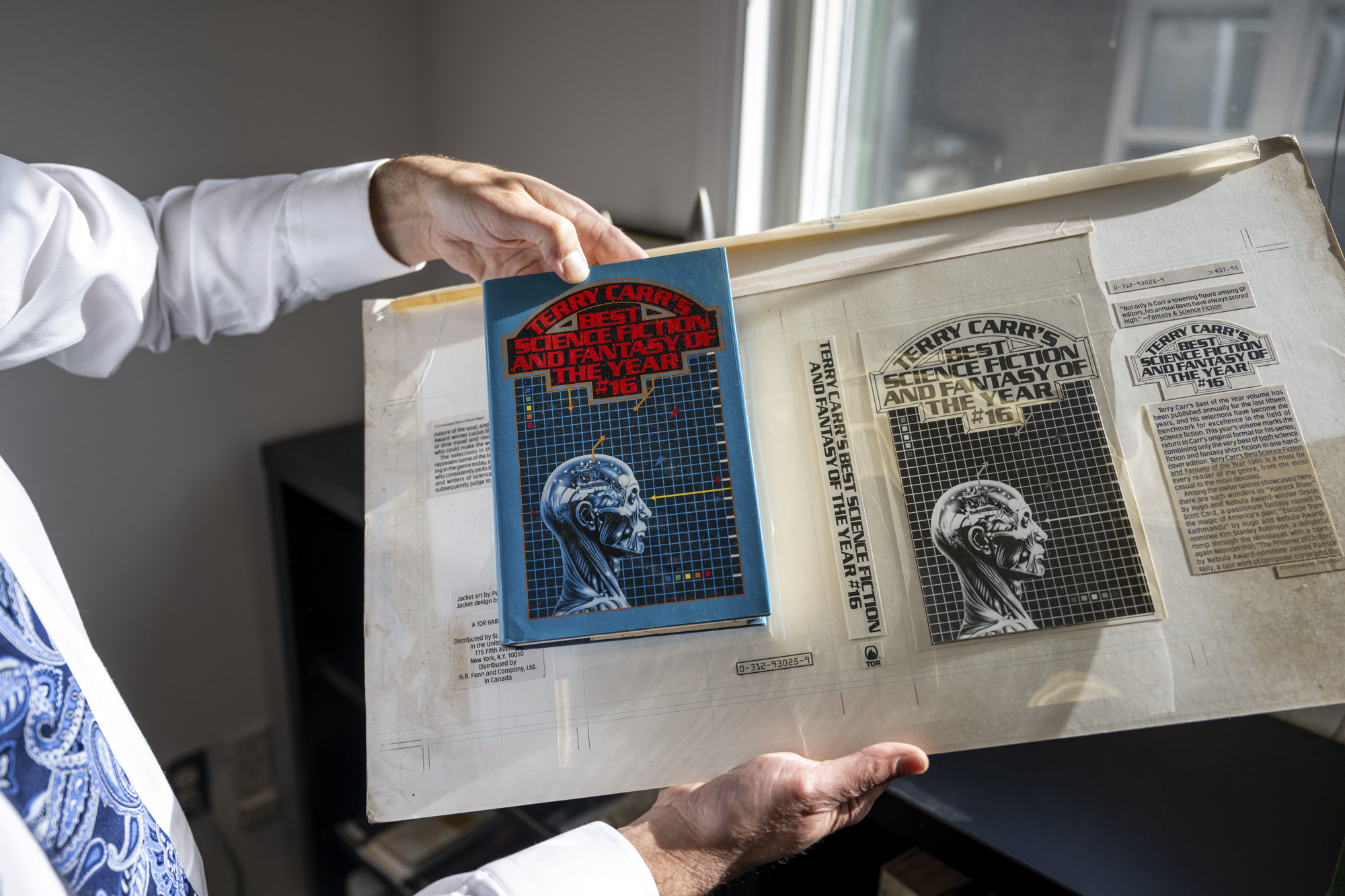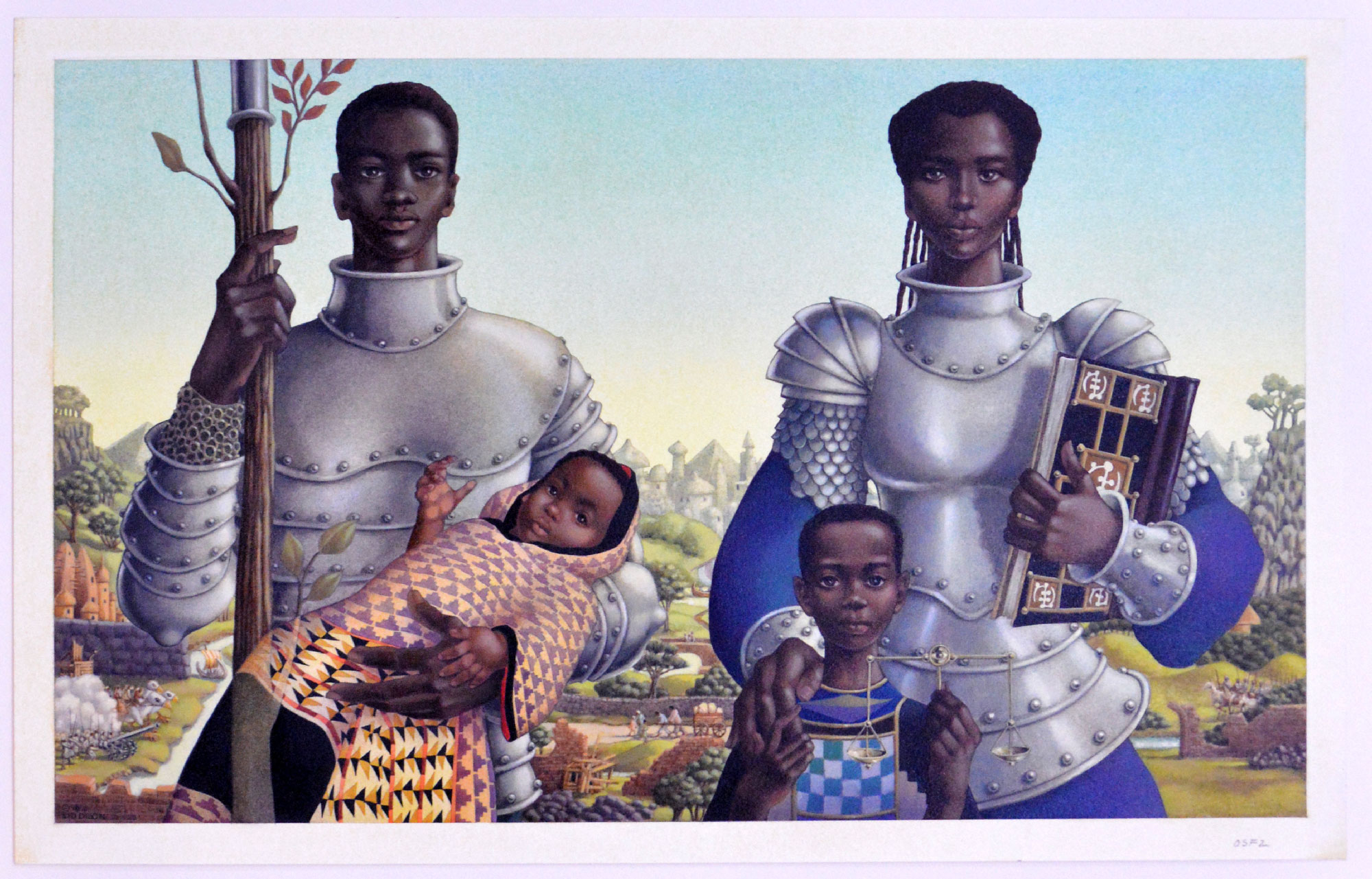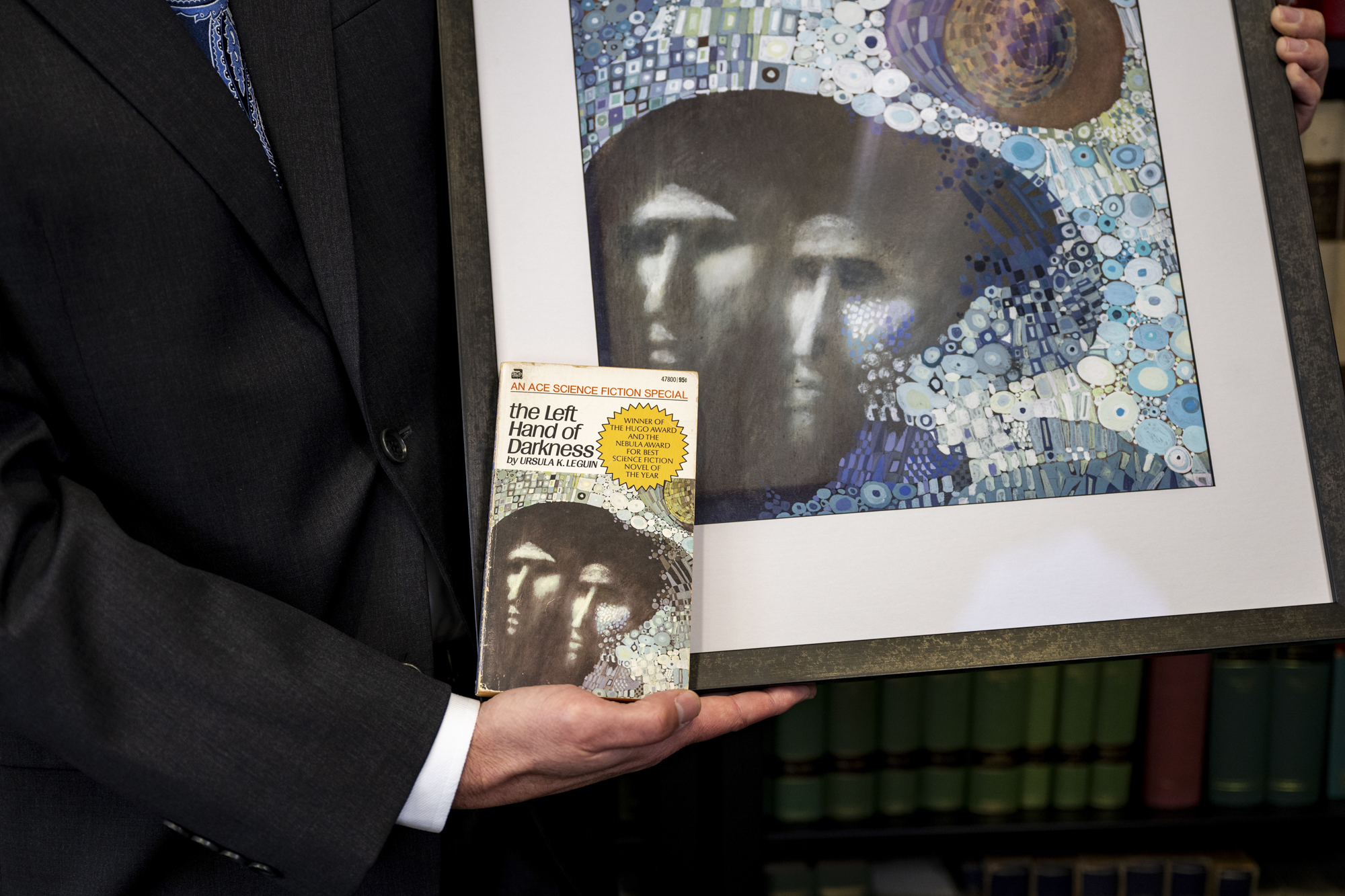Mark Funke has a passion for science fiction history. So when he acquires a rare artifact, like the original cover art for The Left Hand of Darkness, it’s akin to viewing a gleaming treasure, long sealed away.
“It’s wonderful,” says Funke, a bookseller based in Mill Valley. “This is the kind of material that we live for.”
His business is focused on selling documents and other archival materials; his main audience is university researchers and rare collectors. A painting is not his usual fare.
The cover’s literary significance is evident. Le Guin, who grew up in Berkeley, won the Hugo and Nebula awards for The Left Hand of Darkness, a 1969 novel that places an interplanetary envoy on a frozen, androgynous world. Cultural misunderstandings — and feminist explorations of gender, relationships and societal roles — ensue.

“When I talk to other LGBTQIA+ science fiction writers and people who are immersed in science fiction, they always point to The Left Hand of Darkness as a book that kind of showed them how expansive, how rich and how multilayered speculative fiction could be in its approach to gender and sexuality,” says Charlie Jane Anders, a San Francisco-based transgender science fiction writer, who wrote the afterword for the 50th anniversary edition of the novel.
